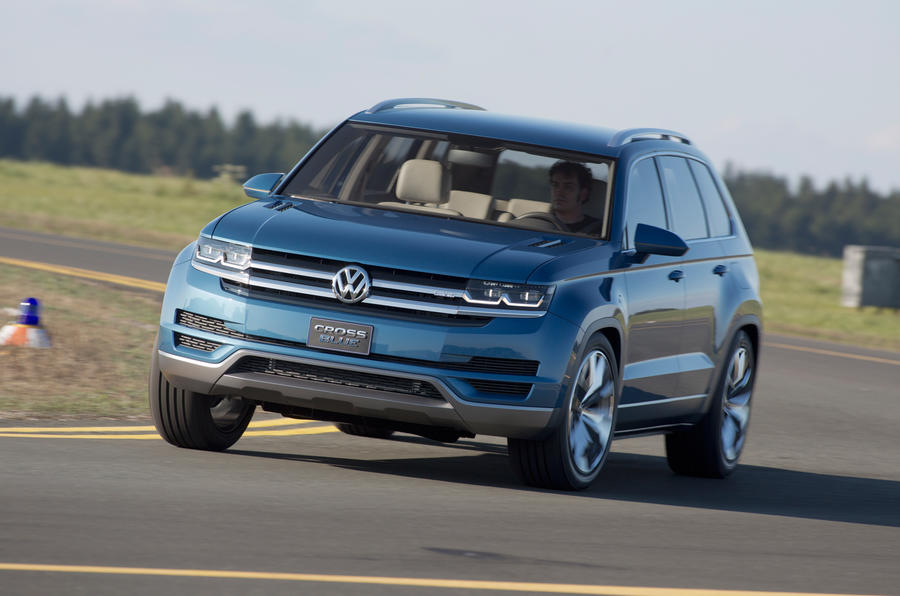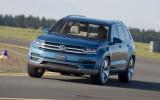What is it?
Officially still a concept, the production version of the CrossBlue isn’t set to appear until 2015 at the earliest, and it’s going to be three years at least before it makes its way to the UK.
Today, though, we get to sample what we can expect from the CrossBlue, with a drive of the very concept that raised eyebrows in Detroit back in January.
The CrossBlue has been conceived and constructed as a fully operational prototype, complete with a diesel-electric drivetrain and lithium ion battery pack. Yet despite the extensive engineering work that has gone into it, the concept isn’t quite road legal, so we’re driving it on an airstrip near Frankfurt in Germany. They’re not exactly the surroundings that VW had in mind when it was conceiving the big SUV, but the broad expanse of asphalt provides a good opportunity to manoeuvre it around without drawing attention from inquisitive onlookers.
Seeing it in daylight for the first time reinforces the view that the CrossBlue concept is very close to what we can expect to see in showrooms. Apart from a few detail features – headlight graphics, mirror housings, tail-light design – it looks ready for production. It’s big, too, riding on a lengthened and widened version of the steel monocoque MQB structure that is set to be used beneath the second-generation Tiguan, due in 2015.
Stretching to 4987mm in length, 2015mm in width and 1733mm in height, the CrossBlue is a significant 562mm longer, 205mm wider and 33mm higher than our Tiguan camera car, which looks tiny in comparison. It is also 192mm longer, 70mm wider and 10mm lower than a Volkswagen Touareg, which will surely grow in its next iteration to make way for its more affordable sibling.
There is a classless, functional appeal to the exterior design, which is conspicuously unadorned. It has only a simple horizontal grille, taut surfacing, fine bodyside crease lines and ultra-tight shutlines. The silhouette is quite boxy, but the upright design provides exceptional practicality, with large door apertures and a wide tailgate that opens at bumper level.
The best aspect, though, is the way that it sits on the road. With track widths of 1686mm at the front and 1696mm at the rear, and 21-inch wheels shod with 285/45 tyres, VW’s new SUV has a confident stance. But with only a moderate ride height, it is clearly not intended to venture too far into the rough.







































Join the debate
Add your comment
VOLKSWAGEN GRAND CHEROKEE.
Ah! The new Volkswagen Grand Cherokee! And almost as good looking as the Jeep original.
Superb SUV
An SUV I covet.
hmm
So what will fill the gap or a car a approx Tiguan size? If this is the show car I don't hold out much hope for the production variant.. Recently VW did some far more attractive concepts fo soft roaders, lets hope they arrive later.